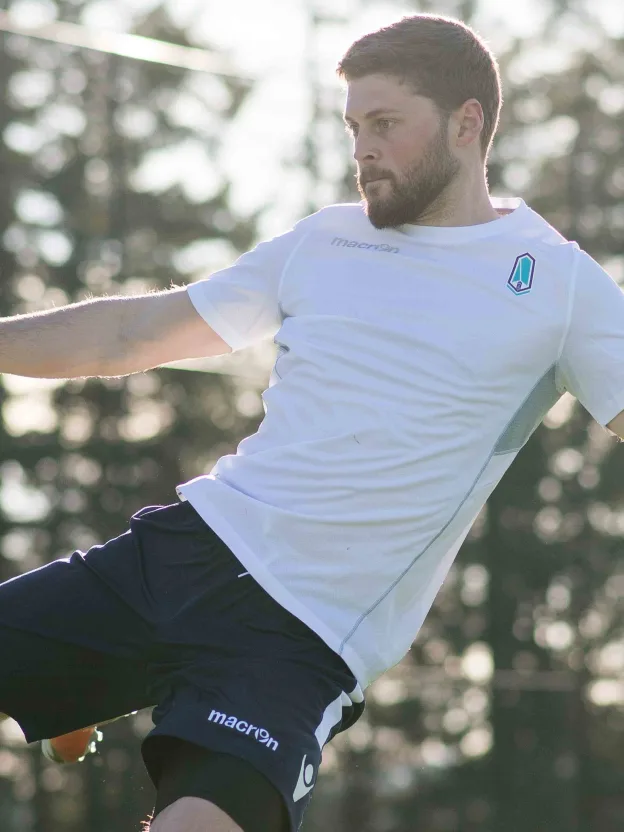Welcome to CPL Rewind, where we highlight previous CanPL.ca articles that tell important and interesting stories about the Canadian Premier League and Canadian Soccer.
The following article was first published on CanPL.ca on March 9, 2020.
The kid that never made it. If you grew up in a small Canadian town, you know that story all too well – it’s a depressing one, and it goes something like this: They were the “best” anyone had ever seen. Maybe they left to pursue their professional aspirations, only to return with dreams dashed, or maybe they never left. Those chances never came. But, boy, could they play. Brett Levis of Valour FC, Nolan Wirth of Pacific FC, and Morey Doner of York9 FC were not supposed to make it. Canadian soccer players from rural or out-of-the-way places are a rare breed. From Saskatoon, Saskatchewan, Comox, British Columbia, and Collingwood, Ontario respectively, these three CPLers have made it to Canadian professional football on whims, once-in-a-lifetime chances, and with overwhelming persistence. In this CanPL.ca Big Read, we spoke to the CPLers who have emerged from Canada’s soccer wilderness and asked, well, how on Earth did you make it through the many obstacles that lay for geographically-challenged young players? How did they find their own extended “pathway” in a country that’s spent years trying to assemble just a few of their own?
CPL DEEP DIVE: How a steak & fish dinner in Madrid led to the launch of Atlético Ottawa
‘I had to blaze that trail myself’: Saskatchewan’s lone CPLer, Brett Levis
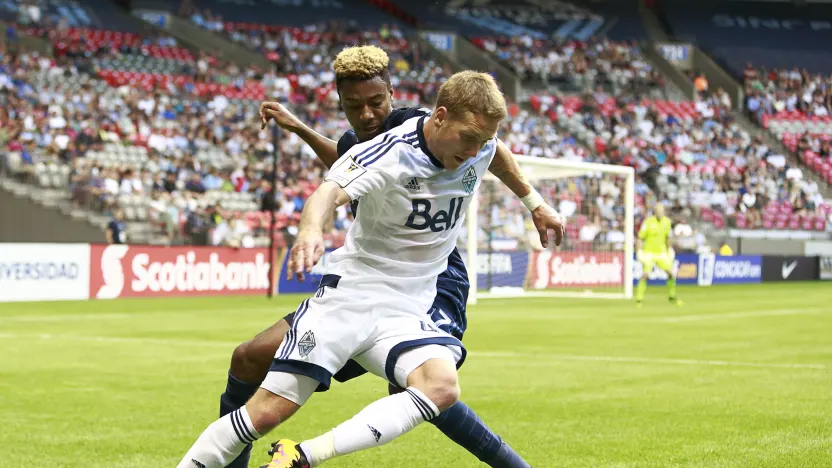
Pathway is one of Canadian soccer’s favourite – and most literal – buzzwords. It’s the trail a Canadian player would need to follow to become a professional; youth soccer, an academy, under-20s, and to a professional club. In that order. Now, soccer pathways are not intrinsically tied to geography. Save for the one Saskatoon, Saskatchewan’s Brett Levis took. Levis – who became the CPL’s first player born in the province when he signed with Valour FC last month – lost his mother when she was 15. Then, right then and there, Levis dedicated himself to his professional soccer career – regardless of how hard or improbable the pathway was. Well, it worked, and he can quite literally trace his professional path on a map of Canada, starting at the University of Saskatchewan. “Saskatoon and greater Saskatchewan were often looked past,” Levis told CanPL.ca about starting out as a young player. “I didn’t have any other chances other than University of Saskatchewan. It was the highest level afforded to me, so I took it. “It ended up helping me grow as a footballer exponentially.” The midfielder made the best of the situation with the Huskies by making the USPORTS (then-CIS) national championships twice and winning the CanWest conference in 2014 – both firsts for program. Levis’ 29-goal return in his 50 matches for U of S was impressive, sure, but it came at an inopportune time in U SPORTS men’s soccer. Long before the CPL-U SPORTS Draft (which saw 12 players make a professional jump in 2019) U SPORTS players were largely excluded from the Canadian player pathway. USL 2 and League1 Ontario would fill a Summer void, but MLS sides certainly were not scouring universities in early Fall for the next big thing. “I didn’t have a vision or pathway to follow as a kid from Saskatoon, at the age of 20, who didn’t come through an academy,” Levis said. “It was difficult to be the first, in a sense, when I joined the Huskies. How would I turn pro? “I had to blaze that trail myself.” Levis’ trial then sent him to Victoria Highlanders and the PDL (now USL 2). A couple good games against the Vancouver Whitecaps’ under-23 PDL team and, a year later, he’s wearing the kit of an MLS side. “I just played really well against the Whitecaps’ under-23 team, it turned out,” Levis joked. “That’s how I got seen. Having a good game against them was the road to go, apparently.” Nearly 50 appearances with Whitecaps 2 in USL (alongside CPLers Dominick Zator, Matthew Baldisimo, Kadin Chung, and others) later, Levis earned a chance with the big club, signing with the Whitecaps in July 2016. Saskatoon to MLS in six years. Not bad. “I was very grateful and it made me very excited once I signed a contract, knowing it would help other Saskatoon players come through,” Levis said, mentioning fellow Saskatoonian Thomas Hasal who signed a pro-deal with the Whitecaps last year. “Players shouldn’t be stuck or forced to make a decision on their future. I hope I proved a pathway for kids there.”
Ski hills & five-inch grass: How Morey Doner made it from Collingwood
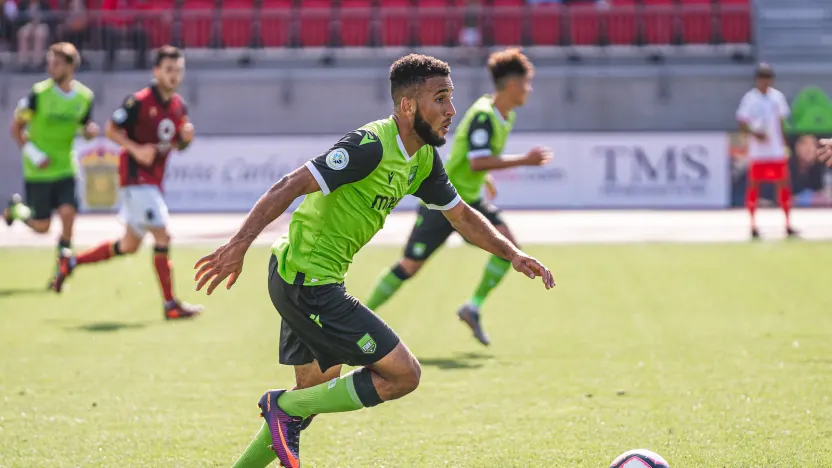
At 21, Morey Doner had been given next-to-no soccer opportunities. He was fitting kids with skis and snowboards at Blue Mountain in his native Collingwood. He’d only ever played men’s league soccer – save for a brief stint with Durham United. Doner was long been considered the best player in the resort town, which is nestled between Blue Mountain and Georgian Bay. Playing in the same-old town on the same-old team, Doner thought there was nowhere to go. “You’d look to the stands and see your mom, a few girlfriends, maybe ten people total,” Doner told CanPL.ca of playing in his early 20s. “The grass is four or five inches long. You’re playing with people maybe twice your age. “All I could think was ‘how could this be?’ If I improve every single day, how will anyone see it? Does it even count?” At a coffee shop in Toronto, the current York9 FC fullback tells stories of coaches and parents in the town of 21,000 singling him out as young as 11. It’s clear he was a special player in a town with just one turf field, which was outdoors. “Kids would come and try and swipe me because they heard I was good,” Doner joked. “That’s when I said it was possible for me to turn pro – however unlikely it was.” Doner had a sliver of a sliver of a chance. His town barely featured soccer players let alone professional ones. After hours of research, and after putting away a few paycheques, he was ready for his breakthrough: a pay-to-play opportunity in Brazil’s lowest professional league. “My experience was, well, ‘Collingwood.’ Who’s going to look twice at that,” Doner joked. “Agents, coaches, they wouldn’t take me seriously, so I had to invest in myself.” That Brazillian team was his first of three clubs he’d play for in 2016. “It was $1,500 Canadian dollars just to be there, per month. To eat beans and rice, sit on the floor. Mosquito nets, cots on the floor,” Doner recalled, referring to that Brazil trip as the start of his professional career. Not a glamorous start – paying for a cot on the floor – but it was his first shot at being a professional. “I had some hard decisions to make, but the pathway was there.” Doner’s agent got the fullback a chance with Palm Beach Suns of USL League Two soon after. From there, an opportunity with a big name in Canadian soccer crossed his path…
Pacific FC’s Nolan Wirth struck lightning in a bottle in Comox
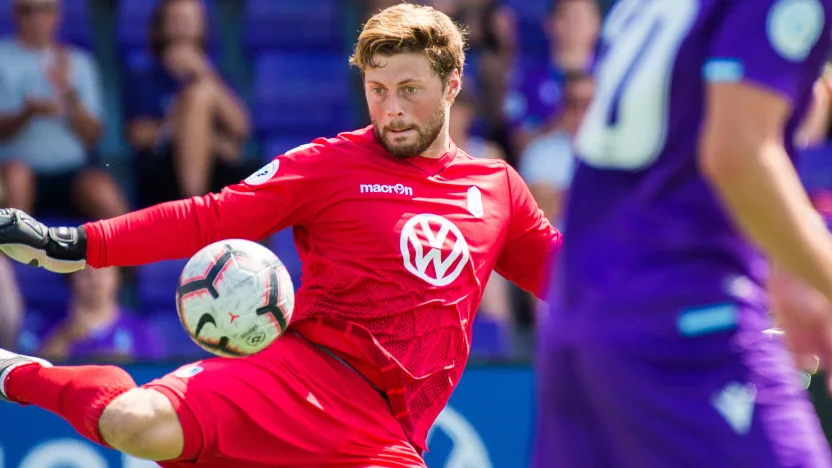
From Comox, British Columbia, Nolan Wirth’s early away days as a kid were unique. Beautiful, in fact, as he suited up in goal across the the beautiful towns and villages of Vancouver Island. “We would play across mid-Island in places like Nanimo, Parksville, and Port Alberni,” Wirth said of his soccer upbringing on the east coast of Vancouver Island. Wirth has managed a homecoming of sorts, signing with Pacific FC last year and making 12 starts on the VanIsle side. But before professional soccer came to his side of the Strait of Georgia, Wirth’s weekend trips were made a lot longer – and required sea travel. Joining an upper Vancouver Island selects team, he and his family were on a two-hour ferry every other weekend, going to away matches all over BC’s Lower Mainland. “Yeah, that was a lot of time on the ferry,” Wirth joked. Eight-hour, round trip away matches for Wirth signifies the greater challenge presented by any player pathway: to be the best, you have to play the best. Upper Vancouver Island’s soccer scene wasn’t to his level, so he needed to take it elsewhere. Those in major Canadian cities – including nearby Vancouver – could simply move up the food chain, if you will, in their own city rather than commit to province-spanning trips. Not to mention the odds. How would a kid from Comox ever get noticed by a professional club? Well, Wirth ended up, like Levis, spotted by the Whitecaps at just the right time. It’s 2011 and their academy program was expanding as they joined MLS. Wirth, along with 15 other out-of-city kids, tried out and made a program that was suddenly expanding by 20-odd players. Wirth, invited to a combine that ran simultaneously with the Whitecaps’ first MLS game at Empire Field (he got tickets, by the way, referencing ‘keeper Joe Cannon in goal that day for the ‘Caps), ended up getting in with Vancouver’s big club at just the right time. “I had to grow up quickly,” Wirth said, mentioning his small-town roots. “At 15, going from living with my parents in brother in a town of 15,000 people, to living in Vancouver and being very independent. It’s crazy. How did I even make that transition?” From there, things grew exponentially for Wirth – including those away trips. “We were all up and down the west coast of North America. We’d play in San Diego for a casual weekend,” Wirth said with a smile. “Going from a Port Alberni away trip to southern California in a few years was a big transition, too. “The first year, there were 15 of us from outside of Vancouver and funnelled into billet families, going to school together.” Wirth moved on from the Whitecaps to Oregon State on a scholarship and later to opportunities with Phoenix Rising (USL) and Victoria Highlanders. So, with a school experience and professional job in his backyard, the question is: Where would he be without that seemingly random Academy expansion by the Whitecaps? “Honestly, I don’t know. I wish I could answer that,” Wirth seemed at a loss for words. “That opportunity was the absolutely best thing that could have happened to me. To train at a high level with some of the best players from all over Canada – I could start to develop and see an improvement I wouldn’t get at home. “I went to Oregon State after I finished with the residency but I would not have been able to get schooling like that without that chance to build my resume. “It made me really appreciate it and even give back.”
‘I need to save this phone number right now’
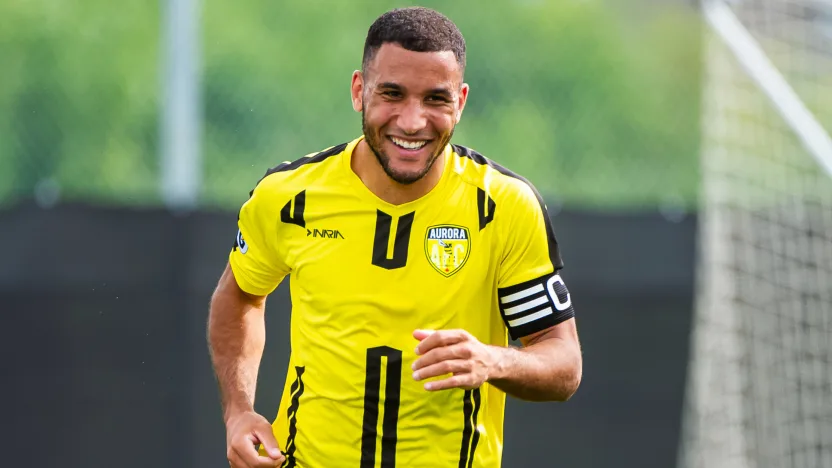
After that short PDL stint in 2016, Morey Doner arrived home in Collingwood… again with no connections. “Anywhere close to home was good, you know,” Doner said, full-well knowing “close to home” would still be hours away. Finally, Doner pieced together a connection to somewhat nearby Aurora FC in League1 Ontario. Current York9 FC coach Jimmy Brennan was at Aurora at the time. Brennan, capped by Canada 49 times, was one of many who had never even heard of Morey Doner before. A late-season trial followed and Doner made the team. Brennan ended up texting the fullback, asking him to come out again “I thought, ‘I need to save his number right now,'” Doner laughed has he reflected on seeing Brennan’s phone number for the first time. He got a chance with Aurora at the end of that season. Brennan departed ahead of the 2017 season, but Doner remained – making the two-hour drive for practices and home matches. He’d go on to play every single minute of the 2018 L1O season – even making the all-star team. Chances came to join other sides – including a deal to be potentially the first League1 Ontario to fetch a transfer fee. But Doner stayed with Aurora. Good thing, that, as an old friend happened to see him play a few weeks later. “Jimmy came to a game and didn’t tell me he was there,” Doner said of the then-announced head coach. “My coach was pushing me hard at the time, he knew Jimmy. Our technical director knew Jimmy as well. They kept bigging me up to him… and it worked.” Doner was invited to a closed-door York9 combine that summer. After that, a week-long combine. By day two, Brennan pulled Doner aside. Sooner than expected that week – but years and years in the making – Doner had his professional breakthrough. “I remember walking away and calling my mom. My only thought was ‘this is really happening,'” Doner recalled, mentionings the four or five nights a week she would drive him to Aurora games and practices. “She would always tell me ‘the journey is just as important as the destination.’ I really believe that. I knew that I had to keep working, knowing that when that opportunity came I could do it. “Now I’m the one who came out of Collingwood and Aurora as well.” Doner had a breakout season with The Nine Stripes in 2019, playing 2,250 minutes across 29 appearances and making the CPL’s Fan Awards player of the season. His pace, defensive abilities, and veteran qualities shined brightly in a league filled with players from well-known academies and large cities.
‘You are not spoonfed like other players’
In Saskatoon, a young Brett Levis found himself staring down an impossible path at a similar age. His own work ethic was all he could rely on. “It gave me this grind that I felt some players lack,” Levis recalled to CanPL.ca, theorizing Canadian scouts would overlook Saskatchewanites at the time. “Players in major cities natural progression that every year they went up a level, went through the academy, that sort of thing. What happens when you don’t have that progression year-over-year, and you’re not spoon-fed up to that point?” Levis work ethic certainly showed itself during his time with the ‘Caps. He tore his ACL during his MLS debut in 2016, leaving a season-long recovery in 2017. He would go on to make another 20 appearances for Vancouver after returning to the roster the following season. “It definitely gives you an extra sense of grind. You’re hungrier.” Doner swiftly recalls a childhood home in Collingwood. His parents, who later split, left the basement unfinished for a pre-teen Morey. Cement floor, three-inch plywood on every wall… and a soundproof ceiling, by the way. “Being from a small area I didn’t have a lot of facilities,” Doner said. “No one played soccer. You have to make due. We had one sports store. You would get a cheap ball and kick it against a wall.” Doner, ultimately, points to his adolescence as the key to his professional soccer success – despite its clear disadvantages. “I made a lot of sacrifices and I didn’t have much at my disposal,” Doner explained. “Being from a small town makes you appreciate what you have so much more. “My upbringing guaranteed me to be humble and not entitled. I’m always going to be a guy to put his head down and work hard. That’s one of the main reasons I got to this point.”
‘Going professional is doable. They need to see this’
Now 25, Nolan Wirth routinely travels the three-hour drive from Victoria to hold soccer camps in Comox. Most recently in November, when he handed over one of his game-worn Pacific FC kits, which now sits behind glass at the Comox Valley United Soccer Club’s clubhouse. “That puts a warm spot in my heart, man,” Wirth admitted. “Going home makes me really appreciate it and give back. Not everyone kid up there knows going professional is doable. They need to see this.” For Wirth, it’s giving back and, by extension, inspiring kids in a historic fishing and lumber town to chase a professional soccer dream. “People in Comox recognize what I’ve done and what I can give back to the area,” Wirth said. “Yes, you’re from a small town but there are still opportunities out there for you. Mine just happened to align – but maybe for a 12-year-old kid there now, if he puts in the effort, maybe it will align for them, too.” Farther east, Levis says things have improved for aspiring soccer players in Canada’s breadbasket; the Whitecaps have opened Saskatchewan academies in recent years and the Saskatchewan Summer Soccer Series has given local talent a showcase against Calgary Foothills and Toronto FC II. “Coming from Saskatchewan you hear that it’s impossible, you have to move away, how are you going to break-through,” Levis said. “Maybe now that I’ve signed a contract or Thomas Hasal has with Vancouver, maybe Saskatchewan won’t be overlooked anymore. “At the end of the day, that’s my goal – let the young players who have the talent and drive in that province get any kind of chance. “Don’t be discouraged by geography.”
There are even more remote Canadian locations than mentioned here. Canada’s North comes to mind. Cape Dorset, where the Canadian Premier League’s Awards will be handcrafted for years to come, has many soccer players playing in the community and an incredible interest in the sport. Players from remote communities in Nunavut still travel long distances to play against the best players in their region – something all aspiring professional players do. The chances of a young player from Canada’s North making it professional? Slim, for sure. But as professional soccer grows in this country, you can’t help but wonder: If Collingwood or Comox can, against all odds, produce professional footballers, where will the next geography-defying player come from? Canada’s soccer pathway is bound to wind its way through many more towns and villages in the near future and, ultimately, make “the kid that never made it” a small-town story of the past.
